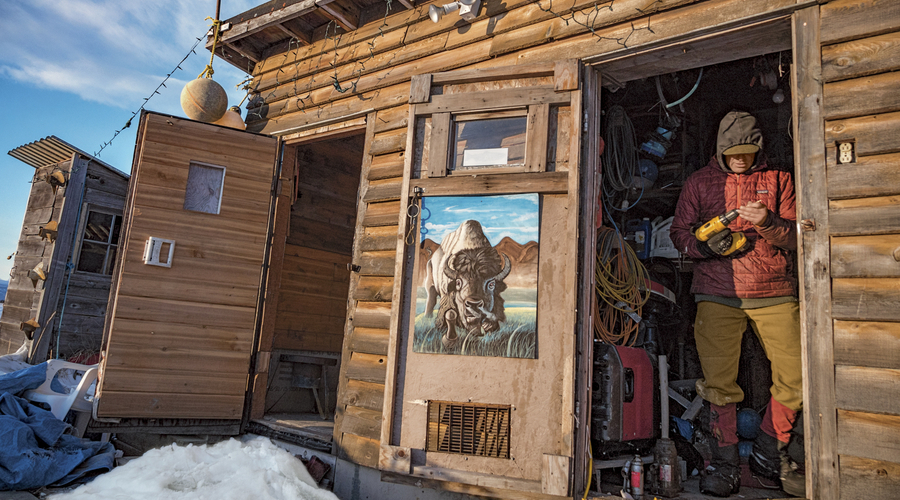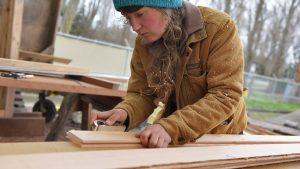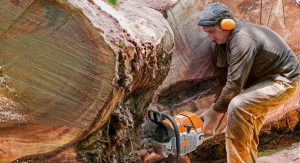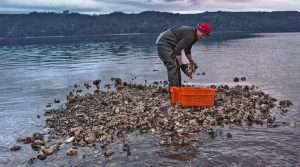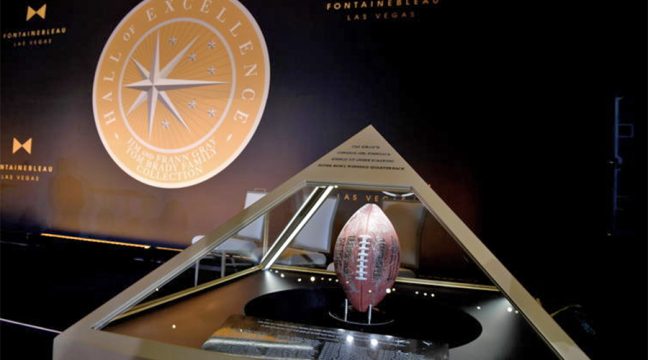“Patagonia has always had a cross section of its core customers who make their living from physical work,” Auman said of the brand’s new industrial hemp workwear line.
Writer: Carly Terwilliger Even for the casual hiker, camper, climber or urban adventurer, Patagonia is a household name. It seems like everyone has a favorite piece – puffy jacket, Black Hole duffel, the humble yet ubiquitous trucker hat. This fall will see Patagonia entering a new category with a workwear line – and it’s not as much of a leap as you might think. The story of Yvon Chouinard teaching himself how to blacksmith in order to hammer out his own climbing equipment has entered into legend, and the company’s new line hearkens back to this chapter of its history. Already known for the comfort, durability and sustainability of its apparel, Patagonia applied this expertise to a lineup of heavy-duty workwear crafted from Iron Forge Hemp canvas, a blend of industrial hemp, recycled polyester and organic cotton. We asked Ed Auman (pictured below right), business unit director for workwear at Patagonia, about the new line and where it fits in the brand’s product pantheon.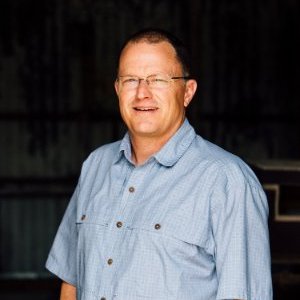 Why Patagonia workwear, and why now? Although our origins lie in an industrial trade (Chouinard Equipment), most of our products were designed for exploring and experiencing the wildest parts of the natural world. But many of our customers learned that Patagonia clothing performed just as well pounding nails, peeling logs and pulling lobster pots as it did scaling the biggest walls. We built this line to meet the need of those people.
What was the brain wave that led to choosing industrial hemp as a material? Yvon Chouinard tasked us with developing the strongest, most comfortable work cloth in the industry. In order to achieve that, you need Industrial Hemp, a new blend of hemp, recycled polyester and organic cotton that is more durable, abrasion resistant and comfortable off the rack than conventional cotton duck canvas.
Additionally, hemp is a very sustainable, natural fiber that’s cultivated with low impact on the environment. It requires no pesticides, synthetic fertilizers or GMO seeds. Cultivation of hemp improves soil health by replenishing vital nutrients and preventing erosion.
Given that this line is targeting a slightly different demographic than Patagonia’s core consumer, what’s your marketing and distribution strategy? Knowing that workwear in general has a price point ceiling, we knew that it would have to be a direct-only model. Patagonia has always had a cross section of its core customers who make their living from physical work. This line is still speaking to them in a way they expect from Patagonia while also talking about what they do when they aren’t pursuing their outdoor sport.
Why Patagonia workwear, and why now? Although our origins lie in an industrial trade (Chouinard Equipment), most of our products were designed for exploring and experiencing the wildest parts of the natural world. But many of our customers learned that Patagonia clothing performed just as well pounding nails, peeling logs and pulling lobster pots as it did scaling the biggest walls. We built this line to meet the need of those people.
What was the brain wave that led to choosing industrial hemp as a material? Yvon Chouinard tasked us with developing the strongest, most comfortable work cloth in the industry. In order to achieve that, you need Industrial Hemp, a new blend of hemp, recycled polyester and organic cotton that is more durable, abrasion resistant and comfortable off the rack than conventional cotton duck canvas.
Additionally, hemp is a very sustainable, natural fiber that’s cultivated with low impact on the environment. It requires no pesticides, synthetic fertilizers or GMO seeds. Cultivation of hemp improves soil health by replenishing vital nutrients and preventing erosion.
Given that this line is targeting a slightly different demographic than Patagonia’s core consumer, what’s your marketing and distribution strategy? Knowing that workwear in general has a price point ceiling, we knew that it would have to be a direct-only model. Patagonia has always had a cross section of its core customers who make their living from physical work. This line is still speaking to them in a way they expect from Patagonia while also talking about what they do when they aren’t pursuing their outdoor sport.
- Iron Forge Hemp Canvas Barn Coat
- Double Knee Pant
- Fog Cutter Sweater
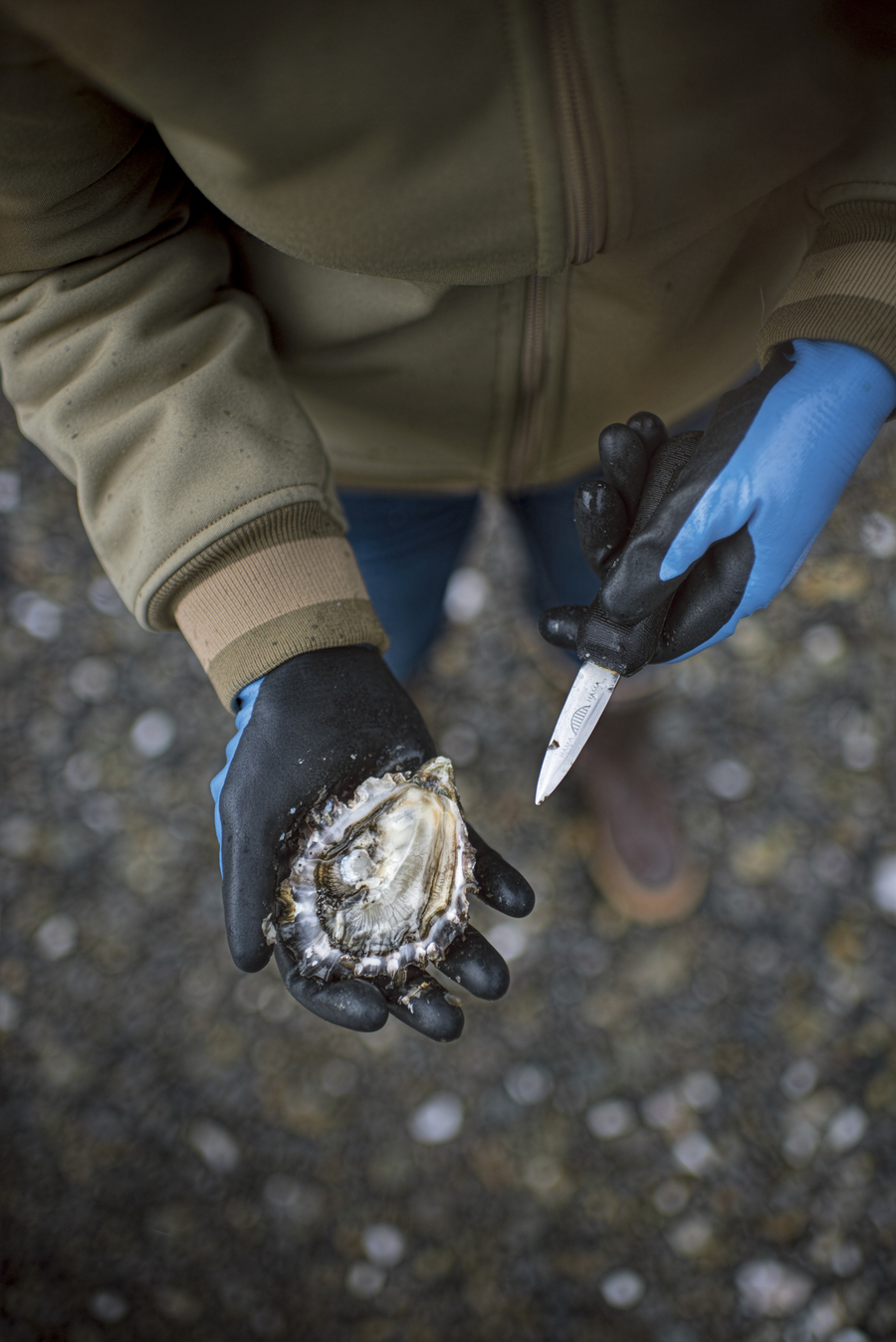
Who made up the team of workwear testers? What did you learn from their feedback? We had our field samples on all types of folks who have lived in duck cotton clothing in the past. They ranged from craftsman, boat builders, wranglers, farmers and ranchers, mechanics and surfboard shapers. What we learned is that our fabric was crazy durable – but the kicker was that you didn’t have to break the products in.
During the development and testing process, which prototype did you personally find yourself wearing the most? The Double Knee Pants.
Auman’s go-to pants – and the rest of the line – can be found at patagonia.com/workwear.
Photos courtesy Patagonia

